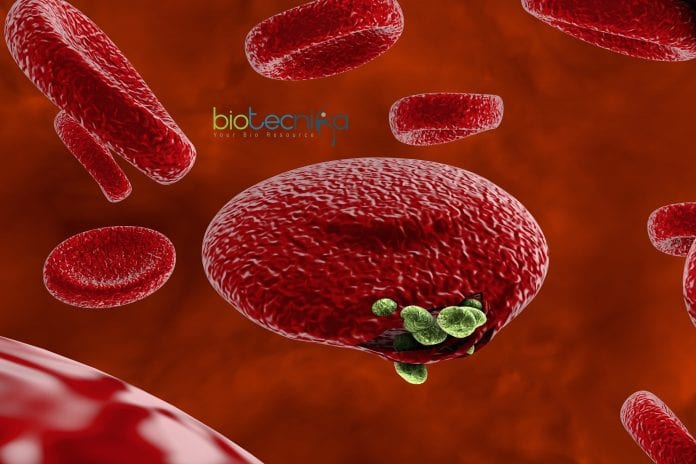Malaria Parasite Traffics Map to Understand Propagation of Malaria in cells
Malaria is a contagious disease that affects more than 200 million people around the globe. According to the World Health Organization’s report in 2018, Malaria causes around half a million deaths every year. Malaria parasites rigidify the red blood cells causing them to clump together, thereby impeding the oxygen transport. To date, researchers were unsuccessful in understanding how the parasites invade red blood cells.
For the first time, researchers described a comprehensive interaction network map of Malaria parasites’ traffics between human host cells. The study was published in iScience on Sept 27.
Plasmodium falciparum that causes the most severe form of Malaria infects a host red blood cell and forces the cell to produce several proteins into the cytoplasm. This eventually transforms the cell, making them stick in place. This also helps the parasites to travel to the cell surface and infect other cells. The proteins also help in the multiplication of parasites leading to severe Malaria.
Kentaro Kato, professor at the Tohoku University Graduate School of Agricultural Science and the author of the paper, said: “Our study sheds light on the highly complicated interplay between parasite and host
proteins in the host cytoplasm.” The study provides a very helpful dataset of interactions between the proteins parasite makes in the cell to keep infecting other cells.The parasites export nearly 400 proteins to the cell’s cytoplasm, among which some don’t hold a specific genetic sequence. This made the study to understand how parasites work with the proteins more difficult. In this research, scientists focused on a single protein, skeleton-binding protein 1 (SBP1), which is crucial for Malaria to propagate.
The researchers narrowed down to one specific protein interaction by studying a highly important protein in Malaria infection that is not exactly triggered by parasitic proteins. This helped them to detail the map of how Malaria parasites propagated inside and outside host cells.
They were able to identify several proteins that interact with SBP1 and play a key role in transforming the host cell using mass spectrometry.
The research sheds light on the complex interactions and interplay between host and parasite proteins. The comprehensive map of SBP1 interactions also paves the way for further study and discussion on the molecular mechanism of the infections that affect human red blood cells.































Biotecnika is one of the best site for life science students, researchers and aspirants. It is very helpful for beginners who want to go for csir net exam.,project work and various job post in the field of life science..